As temperatures cool, cozy thoughts come to mind. Exciting cozy thoughts like, it’s finally wool blanket weather! Nothing in the world can provide warmth like a wool blanket, a thought likely shared by people in 18th-century Virginia. All too often in today’s America, wool blankets are seen only as a textile for use in the home. Something to snuggle under on your couch while enjoying a show, a layer on your bed to help keep you warm at night, or sometimes an accent to be used in home décor. But to those living in the 18th-century Chesapeake region, these blankets could be so much more.
Blankets not only served the function of keeping warm in the home, but they were also sometimes used as clothing. They would be draped, belted, pinned, or wrapped around the body. This style was seen in various cultures across the globe. While the idea of wearing blankets as clothing is fascinating, it is a subject that we will have to explore later. Instead, today’s discussion focuses on viewing blankets as a textile and repurposing them into clothing through patterning, cutting, and sewing.
This fall the Costume Design Center (CDC) at Colonial Williamsburg was tasked with creating blanket coats for some of our interpreters. When given this task, the first question that came to mind was: what did these garments look like? Unfortunately, there are no surviving examples from the 18th century, much less one with Chesapeake Bay provenance. Instead, researchers at CDC dug through the available historic record in order to establish a design.
Fortunately, I accomplished much of the necessary research in 2017. My name is Michael Ramsey and I'm the Accessories Craftsperson at the CDC. My findings are published in an article in the Journal of Dress History entitled: Adopted and Adapted: The Cross-Cultural Appropriation of the Eighteenth-Century Blanket Coat in North America.
This article shows that, despite a lack of extant garments to examine, there is still a wealth of evidence that helps illustrate many of the characteristics of some of these garments. By carefully looking at the written record and corresponding images, we were able to develop blanket coats that reflect their historic counterparts.
The process began with an examination of available evidence. After looking at the written record, extant coats from the early 19th century, and images from the latter half of the 18th century, we chose to limit the availability of blanket coats worn on the streets of 18th-century Williamsburg by only manufacturing them for interpreters whose roles focused on laborers, farmers, American Indians, or the enslaved. It was also determined that our design should be based on a 1778 watercolor by Fredrick von Germann. The image depicts a Canadian farmer, but the details of the coat that he wears mirrors aspects of garments listed in the written record from the Middle and Southern colonies.
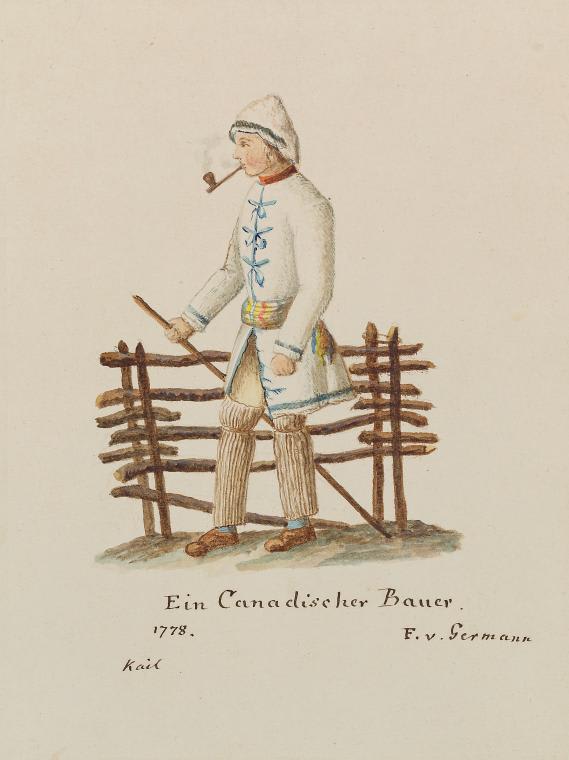
Using this watercolor, I began creating an original pattern. Then, I worked with Beverly Prewitt, the Men’s Costume Cutter/Fitter at CDC, to digitize the pattern using our computer assisted design (CAD) system. The benefit of digitizing the pattern is that the CAD system offers scaling, which allows printing customized patterns to fit any body type. From the newly created digital pattern, I then constructed four mockups for test fittings.
During the fitting process, Prewitt used the mockups, and noted the necessary adjustments to obtain the perfect fit for each interpreter. Those alterations were then inputted into the CAD system in order to print new patterns specific to each of the intended interpreters. With this complete, I authored instructions detailing garment construction so that any CDC tailor could be assigned the task of making these or any future blanket coat.
Once the patterns were corrected for the interpreters, Prewitt laid out the pattern pieces on recreations of 18th-century wool blankets and cut out the various coat pieces. Then coat “kits” were assigned to Tailors Joyce Hutton, Jenna Hallett, Lauren Ramsey, and me. Each stitcher worked on their coat independently, following the same basic construction method of seaming using a machine and whipping down seam allowances, stitching on wool tape to trim the coat’s edge, and applying tie closures down the coat’s front all by hand.

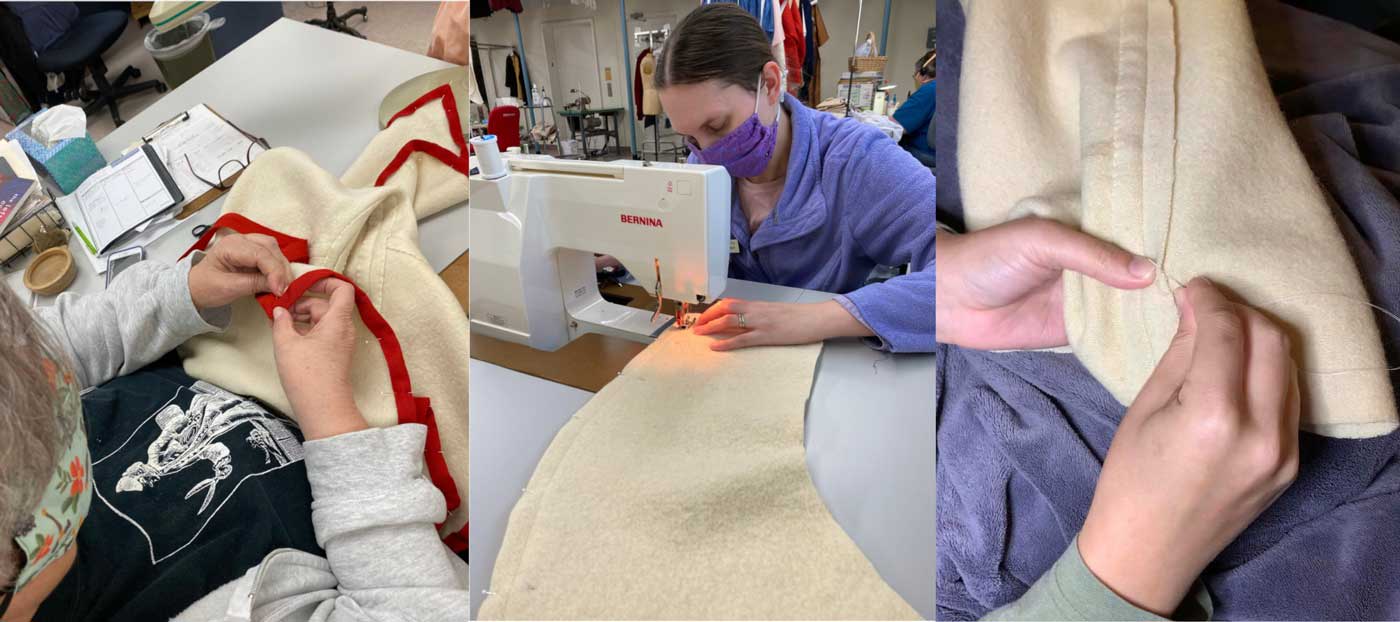
This project has been a pleasure for CDC staff. More importantly, this project illustrates the critical role of the Costume Design Center at Colonial Williamsburg. We are not only committed to clothing the staff of Colonial Williamsburg, but also engaged in the continual study of 18th-century clothing. That ongoing study allows for the refinement of the clothing that our costumed interpreters wear on a daily basis, but also occasionally enables the reappearance of clothing that has not been seen on the streets of Williamsburg in over 200 years.
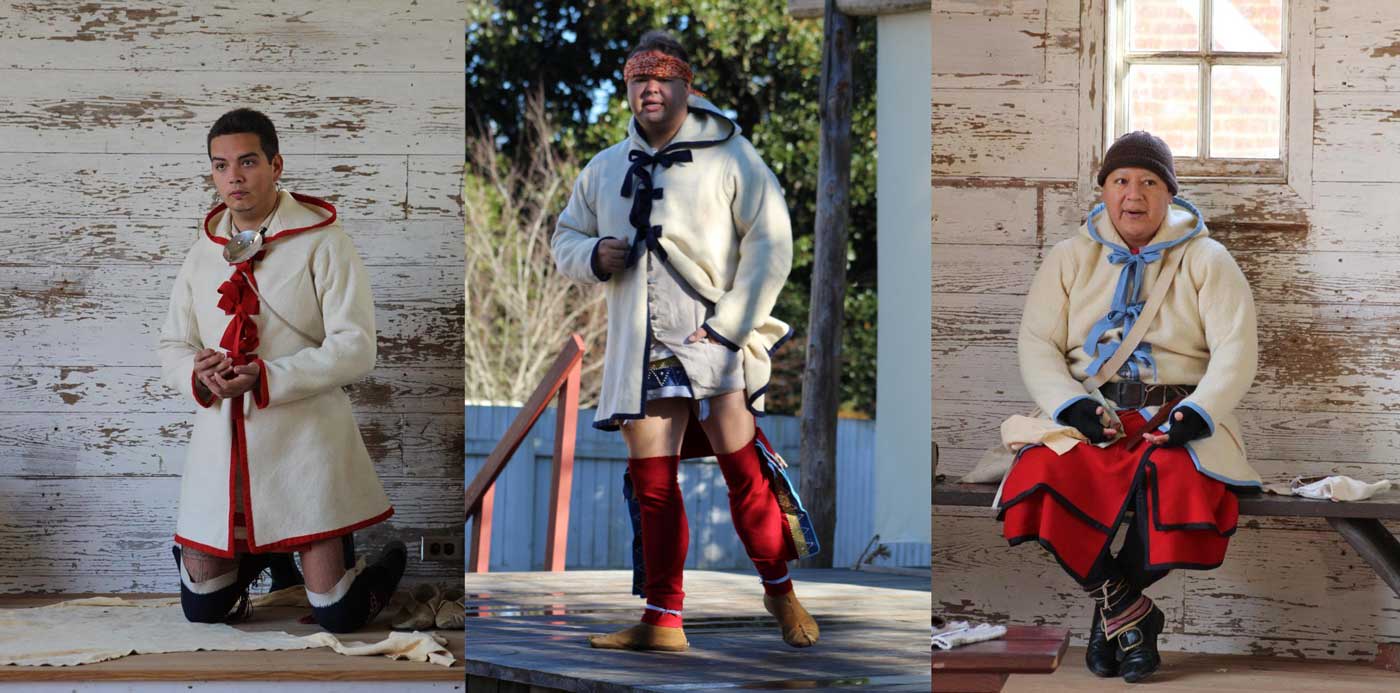
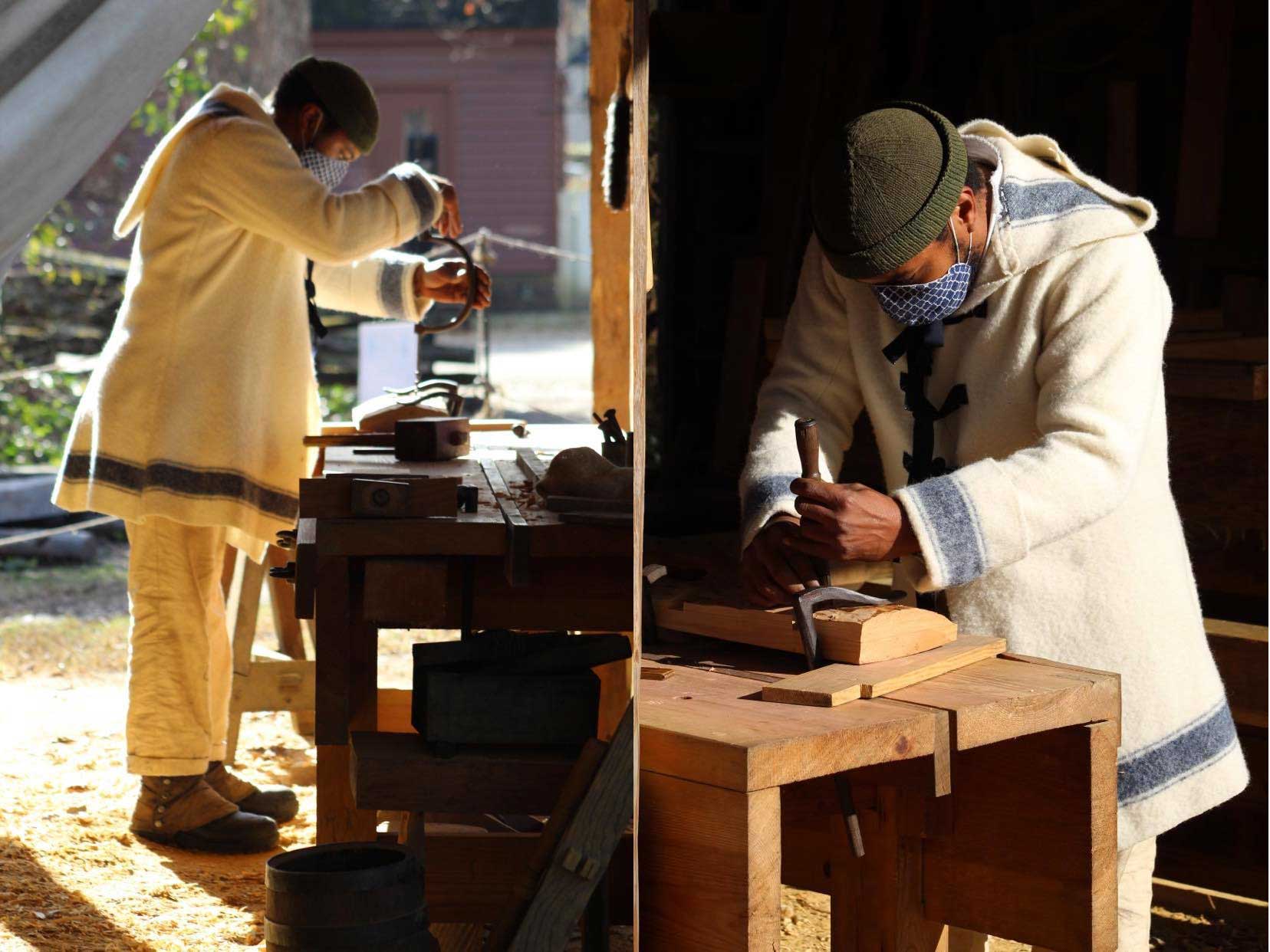
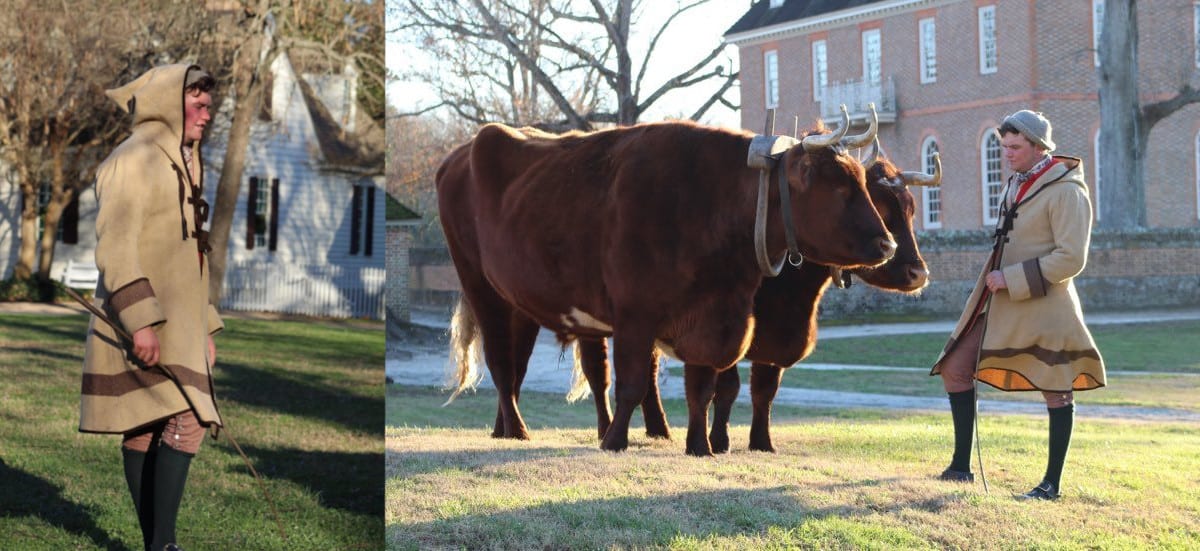
On your next visit to Colonial Williamsburg, you might see one of these coats being worn by the American Indian interpreters, the ox driver, or a tradesperson. The interpreters that will be receiving these garments are all very excited about wearing these warm garments. When asked what excited them most about wearing these coats, many agreed that it will add to their interpretation. One interpreter said it best, “It’s something unique and neat that working class people had. We expect the Washingtons and Lafayettes to have unique garments, but this is ours.”
Michael Ramsey is an Accessories Craftsperson in Colonial Williamsburg’s Costume Design Center. He has worked with the Foundation in several capacities starting in 2013. Along with his work at the Costume Design Center, Ramsey enjoys studying the history of American dress and textiles per-1840. He earned a bachelor’s degree in History from Austin Peay State University.
Further Reading
Ramsey, Michael, “Adopted and Adapted: The Cross-Cultural Appropriation of the Eighteenth-Century Blanket Coat in North America”, The Journal of Dress History, Volume 2, Issue 1, Spring 2018.
Colonial Williamsburg is the largest living history museum in the world. Witness history brought to life on the charming streets of the colonial capital and explore our newly expanded and updated Art Museums of Colonial Williamsburg, featuring the nation’s premier folk art collection, plus the best in British and American fine and decorative arts from 1670–1840. Check out sales and special offers and our Official Colonial Williamsburg Hotels to plan your visit.
